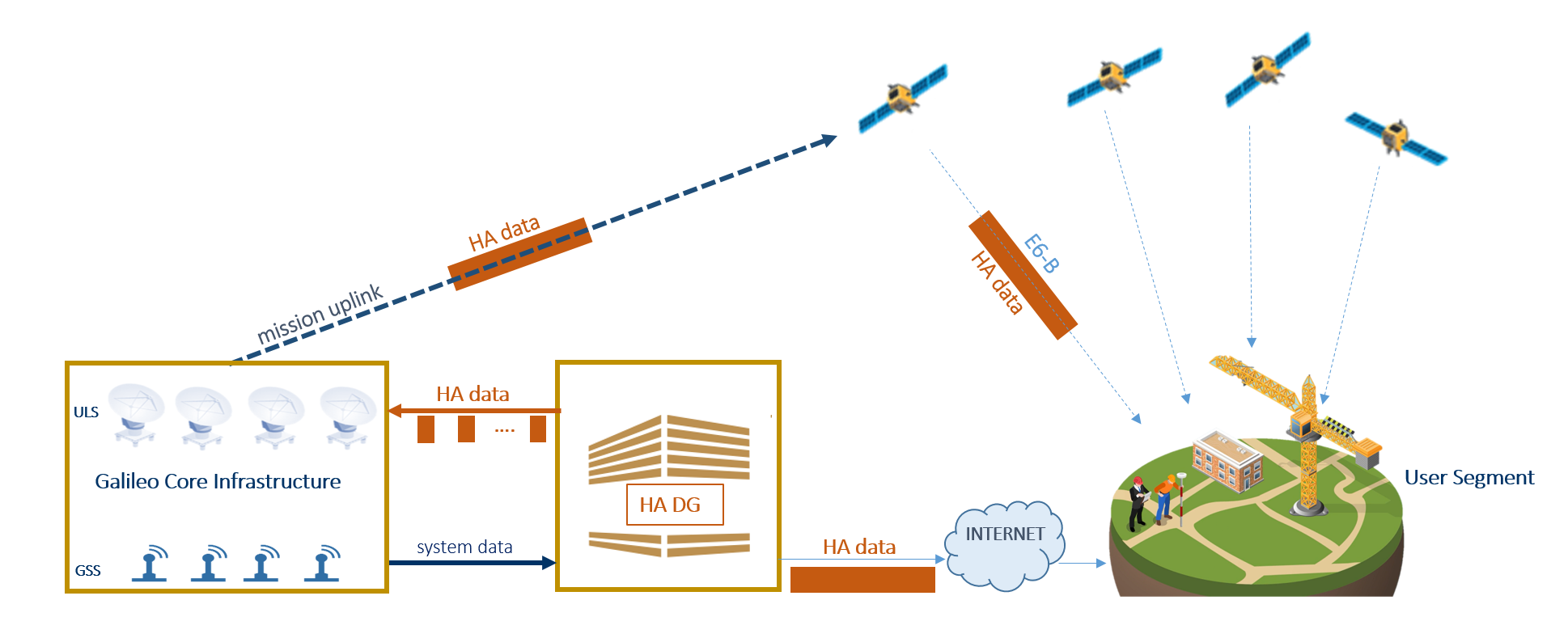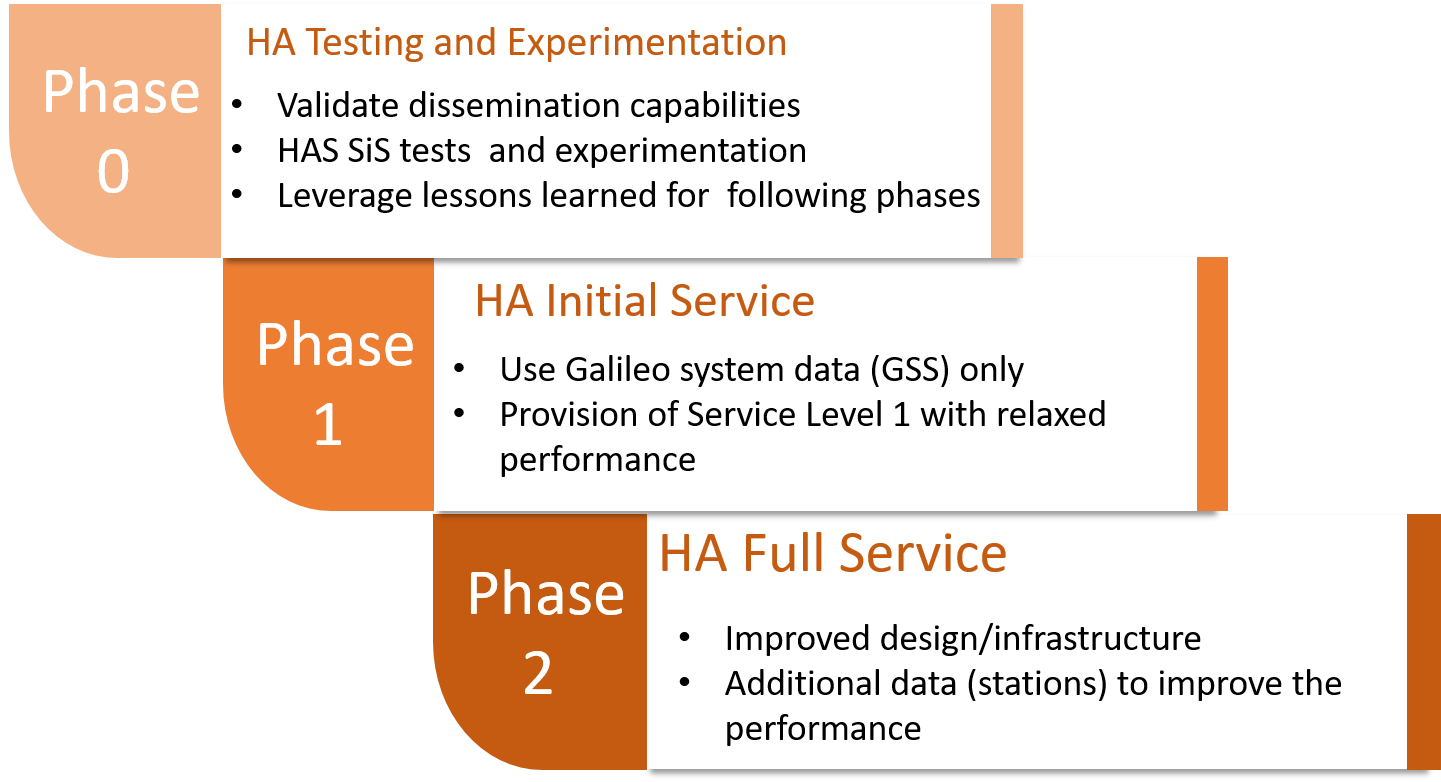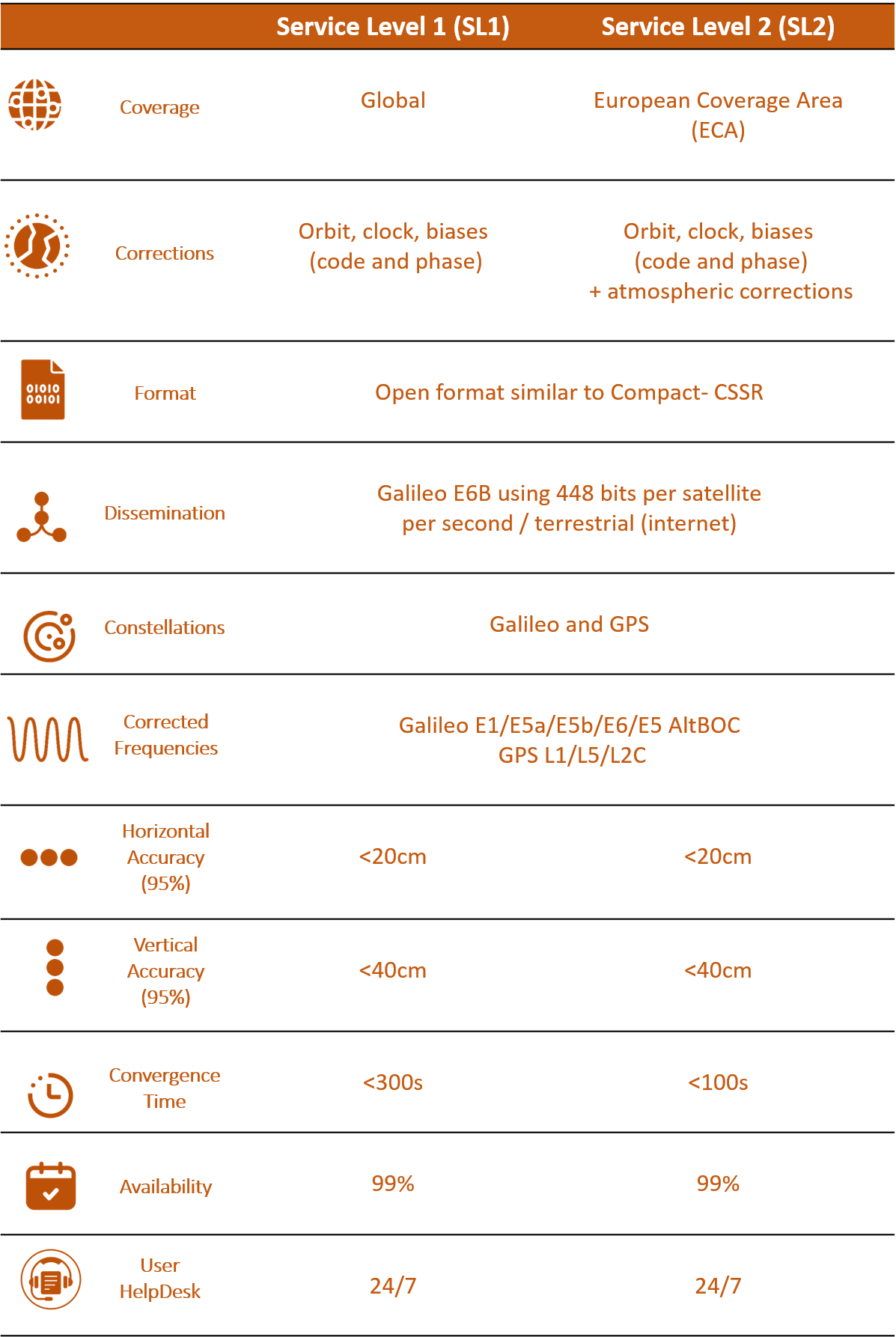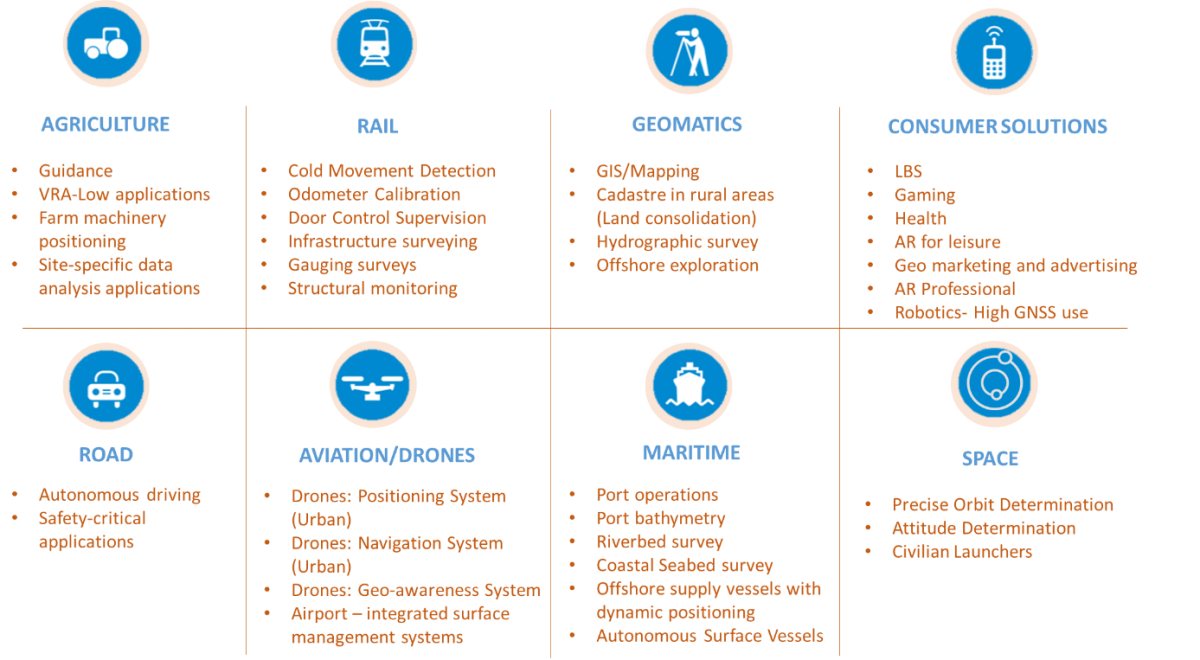What is Galileo HAS?
The Galileo High Accuracy Service (HAS) provides free of charge access, through the Galileo signal (E6-B) and by terrestrial means (Internet), to the information required to estimate an accurate positioning solution using a Precise Point Positioning algorithm in real-time.
The ANTEX file used by HAS is available as part of the HAS metadata.
Galileo HAS Initial Service
With the declaration of Galileo HAS Initial Service on the 24th of January 2023, users within the service area can achieve improved user positioning performance in real-time by exploiting the HAS data delivered in the Galileo E6-B signal component and by terrestrial means (Internet).
The main information provided by the Galileo HAS Initial Service are:
- Satellite orbit corrections to the broadcast ephemerides;
- Satellite clock corrections to the broadcast ephemerides;
- Satellite biases;
Additional information may be provided in the future as part of the HAS service evolutions towards the HAS Full Operational Capability.
Additionally, the following features of the Galileo HAS Initial Service are to be highlighted:
- Multi-constellation and multi-frequency: Galileo E1/E5a/E5b/E6 and GPS L1/L2C signals are supported.
- Open format: reception of the Galileo HAS corrections is possible through two different and complementary means:
- Galileo HAS SIS: please refer to the Galileo HAS Signal In Space Interface Control Document (HAS SIS ICD) for further details on reception of Galileo HAS corrections through the Galileo E6 signal (E6-B data component).
- Galileo HAS Internet Data Distribution (IDD) interface: based on the Ntrip protocol. Access to the Galileo HAS Internet Data Distribution is available by registration.
Once the Galileo HAS corrections are received, the user device needs to implement a PPP algorithm to process the corrections and obtain a high accuracy PVT solution.
A detailed description of the service is provided in the Galileo HAS Service Definition Document (SDD), including the high-level architecture, service levels and the expected performance.
Galileo HAS high-level architecture
The generation, provision and exploitation of high accuracy corrections involve several Galileo system elements:

Figure 1: Galileo system elements involved in the generation, provision and exploitation of Galileo HAS
- The High Accuracy Data Generator (HADG) module receives data from the Galileo Sensor Stations (GSS) and generates corrections for Galileo and GPS signals. The High Accuracy (HA) corrections are relayed in real-time to the Galileo core infrastructure.
- The Galileo core infrastructure receives the HA data and compiles the information into one single message at 448 bits per second and per connected satellite.
- The Galileo core infrastructure, through the Uplink Stations (ULS), uploads the HA data to the satellites.
- Galileo satellites broadcast HA data through the Galileo E6-B signal component. Please refer to the Galileo HAS SIS ICD for further details on reception of Galileo HAS corrections through the Galileo E6 signals.
- HA data is also provided through the terrestrial link, accessible to the users through the Internet. Please visit the Galileo HAS Internet Data Distribution information website for additional information about how to register to the Galileo HAS Internet Data Distribution interface.
- User receivers apply the HA corrections to the supported Galileo and GPS signals and compute a precise positioning solution through the implementation of a PPP algorithm. Please refer to the list of receivers supporting Galileo HAS.
Galileo HAS roadmap
Implementation of the Galileo HAS is following a staggered approach based on the 3 phases depicted in the figure below:

Figure 2: Galileo HAS implementation roadmap
Phase 0 activities were accomplished in the 2020-2022 timeframe, prior to the Galileo HAS Initial Service declaration, when a set of testing activities looking at specific aspects of the Galileo HAS service were conducted. The testing activities involved internal programme stakeholders as well as external participants who had the opportunity to experiment with the HAS signal. Relevant feedback from users was gathered and used to consolidate the service definition.
With the declaration of the Galileo HAS Initial Service, the Galileo HAS implementation reached Phase 1.
The Galileo HAS initial service provides the HAS Service Level 1 (described below) with reduced coverage and performance with respect to the Full Service objectives as enabled by the current Galileo infrastructure (e.g. Galileo Sensor Stations – GSS – network). With respect to the products expected as part of the HAS Full Service SL1 (see below), it is to be noted that phase biases are not yet provided.
Phase 2 will cover the evolution of the service to reach the Full Operational Capability, including compliance to the SL1 performance targets identified in Table 1 as well as the provision of Galileo HAS Service Level 2.

Table 1: Galileo HAS main characteristics for Service Level 1 and Service Level 2
More details on the relevant milestones can be found in the Galileo High Accuracy Service Implementation Roadmap.
Galileo HAS target markets
The following picture provides an overview of the most relevant applications that can benefit from Galileo HAS.

Figure 3: Summary of most relevant Galileo HAS target applications
Global market GNSS trends are published in the EO & GNSS Market Report and information about needs per market segment can be found in Reports on User Needs and Requirements.
Any question?
A compilation of the most common questions on Galileo HAS can be found in the Frequently Asked Questions (FAQ) section of the GSC web portal. If you require additional information, please contact our Galileo Helpdesk at helpdesk@gsc-europa.eu or directly through the Galileo helpdesk form.